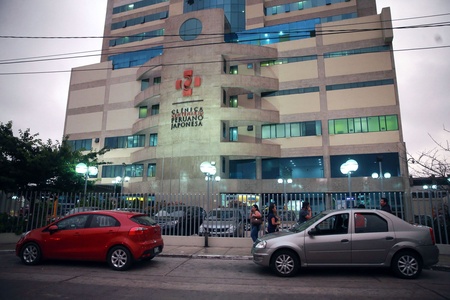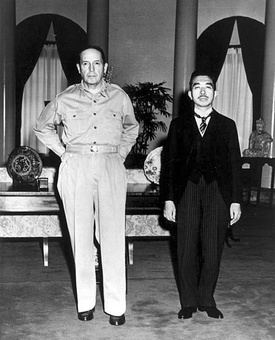On April 3, 1959, the 60th anniversary of the arrival of the first group of Japanese immigrants to Peru was commemorated at La Unión Stadium. Six people who arrived on the first ship, the Sakura Maru, were present at the event. Among them: Kojiro Ito (native of Niigata prefecture), Kumazo Sugai (Niigata) and Taichi Tamura (Hiroshima).
60 years later, the Nikkei community is preparing to celebrate the 120th anniversary of Japanese immigration to Peru. Many things have changed since then. In 1959, only 14 years had passed since the end of World War II and the Japanese colony was still being reconstituted after the abuses suffered during the war. Let's say that the circumstances were not yet ideal to celebrate with splendor the great anniversaries of Japanese immigration to Peru.
The first time the community celebrated in style was in 1979, when it was 80 years since the beginning of immigration. Since then, celebrations have been organized every ten years that the Nikkei not only turn into opportunities to remember and highlight Japanese immigrants, but also to express their gratitude to the country that welcomed them.
Gratitude manifested in works such as the Japanese Peruvian Polyclinic, built for the 80th anniversary; the Peruvian Japanese Theater, for the 90th anniversary; and the Centenario Clinic, on the occasion of one hundred years. In the first and third cases, these are medical institutions that serve thousands of Peruvians daily, and in the second, they are one of the main artistic stages in Lima.

If one reviews the history of the community, one discovers that this is not new. Just to cite two cases: when Peru celebrated one hundred years as an independent country in 1921, the Japanese colony decided to donate a statue of Manco Capac, the founder of the Inca empire, according to legend. The statue was inaugurated five years later and to this day it is one of the most iconic works in Lima.
In 1935, when Lima celebrated its 400th anniversary, the Japanese colony donated an Olympic swimming pool, “Nippon”, where the National Stadium, the main sports venue in Peru, is located today. The pool no longer exists, but photos survive that testify to its existence and magnitude.
Through both works, the Issei expressed their gratitude to the country that offered them a second chance at life and became the homeland of their children, as well as to the city where the majority of immigrants settled.
REMEMBERING A KEY CHARACTER
Turning 120 years old is a great incentive to delve into history. The milestones are known: the arrival of the first ship with Japanese immigrants on April 3, 1899, the mournful years of the war (1939-45), the construction of the Peruvian Japanese Cultural Center in 1967, etc.
Anyone more or less familiar with the history of Japanese immigration is informed about that. However, beyond the facts, there were protagonists, people who made history and whose lives deserve to be rescued.
Today we see works, but we are unaware (or we know little) of their promoters. Probably the most prominent figure in the first half of the history of Japanese immigration was Ichitaro Morimoto, a businessman born in Tottori prefecture and the main architect of the statue of Manco Capac as president of the commission in charge of preparing the gift of the Japanese colony to Peru for its centenary.
Morimoto was one of the founders of the Central Japanese Society (today the Japanese Peruvian Association, the governing institution of the Nikkei community) and its president in six terms.
Likewise, he was the founder and first president of the La Unión Stadium Association, one of the main sports clubs in the country.
Morimoto had various businesses in Peru (a Japanese goods store, a furniture workshop, a dental instrument store, etc.) and was decorated by the president of Peru, Augusto B. Leguía, with the Order of the Sun.
The Japanese businessman was deported to Texas, United States, in 1944, but was able to return to Lima in 1947. In 1954, five years before his death, a grateful Morimoto said publicly: “We arrived, my wife and I, to this beautiful e hidalgo country that welcomed us with all kindness on September 20, 1904. We became nationalized Peruvians in 1926, thus demonstrating the deep affection and immense gratitude for our second homeland.
MENTALITIES FROM ANOTHER TIME
Behind the big facts little things sneak in that sometimes go unnoticed or have little space in official history, but which are worth remembering because they reflect an era and a mentality.
Eleven days after the looting of Japanese businesses on May 13, 1940, in the middle of the war, an earthquake hit Lima. Many people believed that the earthquake was a “punishment” from God for the indignities suffered by the Japanese.
The book Walking 75 Years on the Roads of Peru , edited by Samuel Matsuda, narrates:
"You heard people say that '(Emperor) Hirohito had pressed a button and sent an earthquake to Peru.' As soon as she felt the violence of the shaking of the ground, a woman rushed out of her house and in the middle of the street she knelt down and looking at the sky she implored out loud: 'Please, Lord, I have not done anything bad against the Japanese.'
Speaking of the war, in Peru there were also Japanese who refused to accept their country's defeat. Like in Brazil. Although the so-called kachigumi did not reach the extremes of the neighboring country, there is a record of their existence until a year as late as 1958, thirteen years after the end of the war!

Once, an important leader of the colony received a letter from the Kachigumi: “You are a traitor to the country. We can't let you stay alive because you're telling everyone that Japan lost the war. “Go say goodbye to the family because soon they will come to execute you.”
Luckily, they never carried out their threat. However, the message shows the degree of irrationality and fanaticism of those who believed in the invincibility of the Japanese empire. They had a clandestine organization called the Patriotic Fraternal League, whose blindness made them vulnerable to a trickster named Kenzo Abe, who entered Peru illegally across the border with Brazil and who claimed to be a retired Japanese navy officer.
Abe went on to convince the Kachigumi that Japan had defeated the United States using a bomb more powerful than the atomic bomb and had captured General MacArthur. Likewise, he made them believe that a Japanese fleet was in the Panama Canal and that it would soon pick up the Japanese residing in Peru to take them back to Japan.
The man did not last long in Peru. Around five months after his entry, he was arrested and expelled from the country for illegally entering Peruvian territory and disturbing public order 1 .
PIONEERS
Juan Ohata, Víctor Tateishi, Francisco Watanabe, Gerardo Yamakawa, Luis Okada, Olga Azato and Luis Minami are names that the new Nikkei generations do not know.
All of them, Nisei, made history because they were pioneers in their field. In 1925, Ohata became the first accountant of the Peruvian-Japanese community; Víctor Tateishi, the first lawyer in 1948; Francisco Watanabe, the first doctor in the same year; and Gerardo Yamakawa, in the first police officer in 1956.
Luis Okada, in 1954, was the first Nikkei to join a Peruvian soccer team. Olga Azato was the first member of the community to be part of a national volleyball team. South American champion, she received the Sports Laurels, the highest distinction awarded to athletes in Peru.
Luis Minami became the only Nisei boxer in America. He participated in the Olympic Games in Mexico '68, where he obtained a creditable fifth place after two victories and a loss in the quarterfinals 2 .
Like them, there are many other pioneers in various fields. People who challenged the limits by venturing into fields that until then were virgin territory for the community. Forgotten names (or not sufficiently remembered) that the commemoration of 120 years of Japanese immigration should highlight, as well as characters and events from our history whose memory, with the dissolving effect of time, is fading.
Grades:
1. Walking for 75 years on the roads of Peru . Matsuda, Samuel.
2. Nikko Magazine .
© 2019 Enrique Higa





